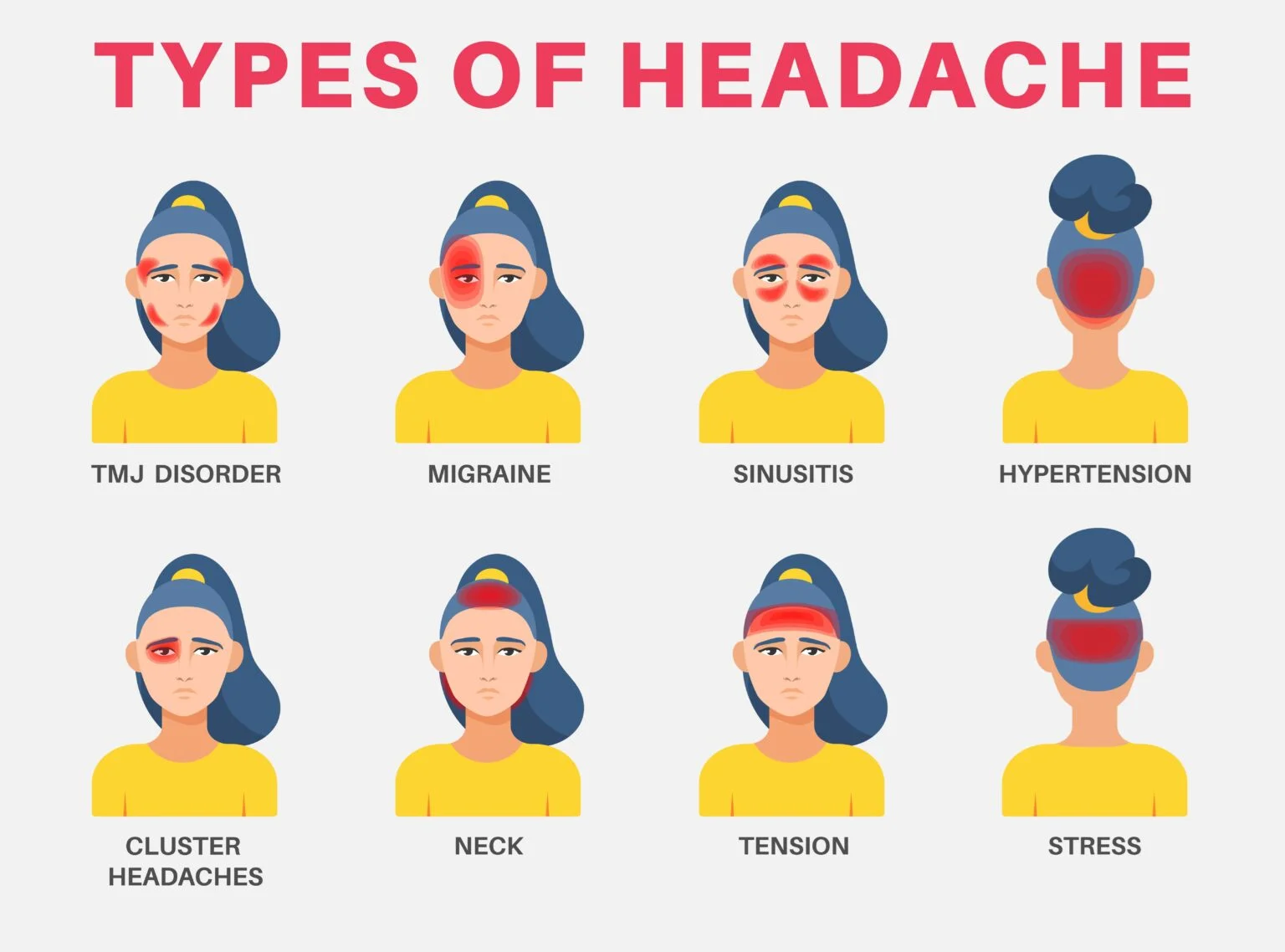How Physiotherapy Helps Cervicogenic and Other Types of Headaches
Article by: Elinos Petrou
Physiotherapist in Strovolos, Nicosia
Before explaining how physiotherapy helps chervogenic headaches, let’s first see what this is and how it may occur. One of the most common complaints people have is headaches.
However, those experiencing them are affected in the worst case because this can impact daily life and work and hinder them from carrying out their tasks effectively. One of the most common types of headache is cervicogenic headache. NIH states that CGH affects 22–25% of the adult population with females being four times more affected than men. Cervicogenic headache originates in the neck area and goes towards the head. The most common type of treatment for cervicogenic and other types of headaches is physiotherapy. In this article, we will discuss how physiotherapy can help with cervicogenic and other headaches for pain relief.

Understanding Headaches
A headache is one of the most common yet misdiagnosed conditions. Cervicogenic headaches can cause neck stiffness, irritation, nerve irritation, and muscle tightness. The headache often starts at the base of the skull and usually goes to one side of the head. One can also experience pain behind their eyes or towards their forehead and temples. In serious conditions, the upper back, shoulders, and neck start to stiffen up, which can further limit the mobility of the neck. Cervicogenic headaches can also present with dizziness, or nausea
How Does Physiotherapy Helps with Cervicogenic Headaches?

Physiotherapy is one of the most common yet simple solutions to cervicogenic headaches and other types of headaches. This therapy is a non-invasive method. With exercise and simple lifestyle changes, physiotherapy services in Cyprus can improve the quality of life. Physiotherapy can help reduce pain, increase movement, and strengthen the neck and upper body muscles. The main aim of physiotherapy for cervicogenic headaches is to reduce the frequency of headaches and further increase and strengthen the movement of the body muscles.
How Physiotherapy Helps Cervicogenic Headaches:
1. Manual Therapy for Neck Joints
The physiotherapist will focus on the movement of neck joints and allow them to work better.
This can help reduce inflammation and allow movement of the neck.
The techniques used will normally be cervical mobilization, which will allow the neck to move freely without discomfort, and manipulation, which will target adjustments, allowing tension release and improving the neck’s alignment.
2. Soft tissue mobilization
Cervicogenic headaches can tighten neck muscles. Physiotherapists use techniques to release neck tension and loosen up the muscles. Massage therapy will relax your neck and shoulder muscles. Secondly, myofascial release focuses on releasing tension from the connective tissue around the muscle and improve the range of motions of joints.
3. Improving Body Posture
Cervicogenic headaches are often related to poor posture, which can worsen the headache. If you wonder how physiotherapy helps cevicogenic headaches you need to understand how physiotherapy will allow you to carry out your daily tasks in a way that doesn’t strain your neck. For those who have to sit for long hours at the desk, physiotherapists will provide them with ways to work comfortably for longer hours and offer them postural education to keep their head and neck positioned in a way that does not strain their muscles.
4. Increasing Flexibility with Stretches
Stretches can help reduce muscle tightness and improve flexibility, which can help alleviate headaches from the neck area. Regular stretches will include upper back stretches that will loosen up the neck and head area and neck rotation exercises that will improve flexibility and mobility in the neck area
5. Relaxation Techniques
This is the most common way physiotherapy treats cervicogenic headaches. Physical therapy in Nicosia GESY provides stress relief, and relaxation techniques include deep breathing and mindfulness to prevent headaches and reduce tension-related headaches as well.
How Physiotherapy Helps Other Types Of Headaches
1. Physiotherapy for Migraines:
Migraines are neurological conditions. Those who get migraines can experience an attack that can last from 4 hours, and in severe cases, a migraine can last up to 72 hours as well. Common symptoms that are associated with migraines include nausea, vomiting, and sensitivity to loud sounds and lights. Physiotherapy treatment for migraines will consist of massages, application of hot and cold packs, along with stretching exercises and aerobic conditioning.

2. Tension Headaches
Tension headaches are when one experiences a sensation of tightness around one or both sides of the head. Tension headaches are usually caused by stress, lack of sleep, or poor posture. Physiotherapy can help with tension headaches, including manual therapy and massages to reduce muscle tension, particularly in the neck and shoulder area.

Not Yet Convinced How Physiotherapy Hepls with Cervicogenic Headaches?
Benefits of Physiotherapy for Headaches:
Physiotherapy for headaches can reduce the frequency and intensity of the headaches one is experiencing. You should look for a physiotherapist near me because physiotherapy is a non-invasive approach. It not only helps with headaches but also improves other body parts, such as improving body functions, increasing oxygen supply, improving blood flow, and reducing pain and inflammation. One can expect improvement in a few weeks to several months with physiotherapy. The improvement occurs gradually, but physiotherapy’s long-term effects on headaches are worth it.
